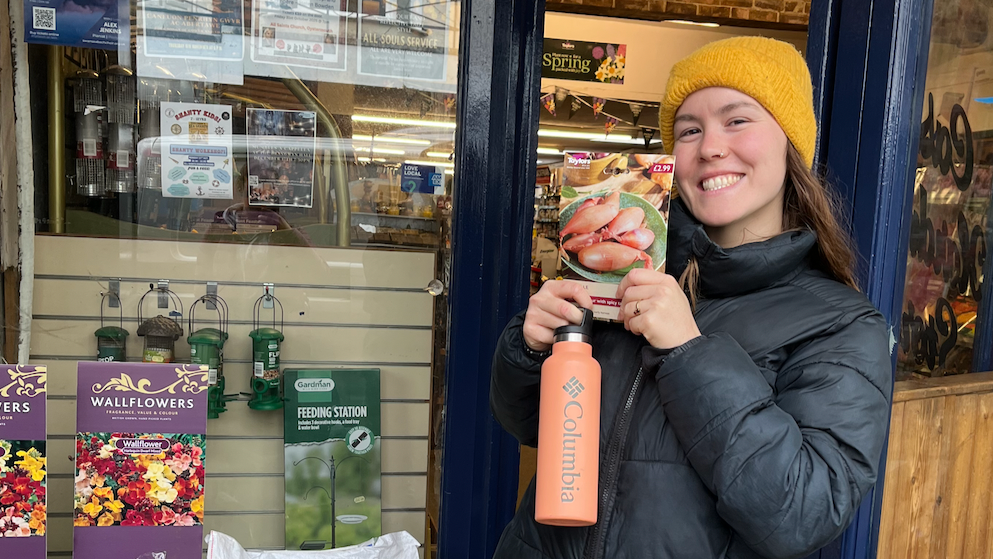St Thomas Postcode Gardener Project
By Isabel Hackett
Let’s take a moment to walk through the last year with the St Thomas Postcode Gardener project.
But first, hello! My name is Isabel, I am new to Swansea, and I will be writing a column in the newsletter as I journey through the city, meet new faces, and learn more about the different initiatives running at the Environment Centre.
This month I’m headed across the bridge to St. Thomas and Port Tennant, where the Environment Centre has been heading the Postcode Gardener project. Postcode Gardener is a project supported by Friends of the Earth, delivering funding and support for urban greening across the United Kingdom. I myself don’t have the greenest of thumbs (though perhaps this will change!) but I was very curious about the work being done to create biodiversity niches in the midst of the concrete and big roads.
Wildflower Planting
I met with Ollie, the project head, in his office at the Environment Centre. Over tea he told me about the exciting work coming up, the front gardens already attended to, and just how much he has enjoyed getting to know members of the St. Thomas and Port Tennant communities. I heard about volunteers like Tina, a resident of the area who has volunteered at almost all of the sessions this year, and about the firsts hosts who invited the volunteer team in to turn their front garden into a nature site. I also learned about the projects running alongside the plantings. The day before we met, Ollie held a leaf rubbing workshop, alongside an art teacher, at St Thomas Community Primary School.
The goal of the Postcode Gardener project is a network of fifty spaces, combining smaller sites, such as pots and windowsills planters, mid-sized sites like green strips along the sidewalk and front gardens, and larger community spaces. Currently eleven sites have been created.
After our discussion I was eager to get out and see the gardens. Ollie sent me the map and I started walking!
I must say, if you are new to a city, a guided walk from flower pot to flower plot is not a bad way to explore. Spread throughout the neighborhood, it was lovely to find plants budding up in gravel, and in windowsill planters that were hammered together by volunteers at St Thomas Church! In the garden shown above, six volunteers planted ceanothus, blue flowering clematis, evergreen jasmine, thrift, tricolor sedum, goldheart ivy, English lavender, cosmos, and bay.
Another space in Jersey Park was made up of planters built by a youth group at the Port Tennant Community Centre, and planted by John and Tom, two men in their nineties who have been avid gardeners throughout their lives.
John and Tom planting at Port Tennant Community Centre
If you are checking out the Environment Centre’s newsletter you likely don’t need to be told why you should care about this. But I know for myself, it still doesn’t hurt to be reminded. In the world of bad news I know at times I can become a bit numbed to the small details. Yes, planting flowers is good but so what?
So I am here to say there is a power to the little things. It brings us together, it attracts pollinators back into our communities, it feels good and ~is good~ for us (if you’re interested in the fascinating scientific evidence, read this: Community Gardening Activities and Their Effects on Mental Health of Residents).
It alters not only our sense of attachment to the natural world, but our actual literal attachment and connection to a network that stretches on for miles around us, descends meters beneath our feet, and buzzes right around our heads.
Plus, each step starts something bigger. Can you imagine the whole city in bloom?
In that vein, I encourage you to check out the Environment Centre’s new pamphlet about the Right to Grow in Wales. I personally had not heard about it before, and found it to be incredibly empowering information. We don’t need to let land lie fallow, we can bring biodiversity back, grow edible plants, and create community. It’s your earth. Come and plant on it!
To get myself started, I’m going out into the backyard and planting shallots! Planted in November, you will be harvesting them in Spring (~36 weeks from planting).
As much as I wanted to grab some off the shelf, supermarket shallots are not from the UK – making it unsuitable for the climate and giving it the potential to spread disease. Instead, I headed over to Cash Hardware Store in Mumbles, and grabbed a pack.
Me with my Shallots!
I went out into the backyard on a chilly, wet morning and planted my shallots. The hardest part was clearing a bit of soil. Once you’ve turned the soil and made it nice and loose, you plant the full shallot – just pop them in the ground with the stringy part down!
If you too would like to grow some food and green your thumb up a bit, join me! Garlic and shallots can be planted now (though when I was at Cash Hardware they were out of garlic, so if you want to go for it, give them a ring).
If you do, feel free to shoot us a message on Instagram with a picture of you out there in the dirt!
If you are interested in volunteering with the Postcode Gardener project, or if you live in St. Thomas or Port Tennant and have a space you would like turned into a nature hub, send an email to pg@environmentcentre.org.uk
Shallots in the Ground




